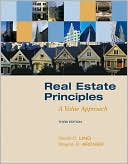Category Books
- Fiction Books & Literature
- Graphic Novels
- Horror
- Mystery & Crime
- Poetry
- Romance Books
- Science Fiction & Fantasy
- Thrillers
- Westerns
- Ages 0-2
- Ages 3-5
- Ages 6-8
- Ages 9-12
- Teens
- Children's Books
- African Americans
- Antiques & Collectibles
- Art, Architecture & Photography
- Bibles & Bible Studies
- Biography
- Business Books
- Christianity
- Computer Books & Technology Books
- Cookbooks, Food & Wine
- Crafts & Hobbies Books
- Education & Teaching
- Engineering
- Entertainment
- Foreign Languages
- Game Books
- Gay & Lesbian
- Health Books, Diet & Fitness Books
- History
- Home & Garden
- Humor Books
- Judaism & Judaica
- Law
- Medical Books
- New Age & Spirituality
- Nonfiction
- Parenting & Family
- Pets
- Philosophy
- Political Books & Current Events Books
- Psychology & Psychotherapy
- Reference
- Religion Books
- Science & Nature
- Self Improvement
- Sex & Relationships
- Social Sciences
- Sports & Adventure
- Study Guides & Test Prep
- Travel
- True Crime
- Weddings
- Women's Studies
Real Estate Principles: A Value Approach » (3rd Edition)

Authors: David C. Ling
ISBN-13: 9780073377322, ISBN-10: 0073377325
Format: Hardcover
Publisher: McGraw-Hill Companies, The
Date Published: October 2009
Edition: 3rd Edition
Author Biography: David C. Ling
David C. Ling (Ph.D, 1984, and MBA, 1977, The Ohio State University) is the William D. Hussey Professor of Real Estate and the Director of the Real Estate Research Center in the Warrington College of Business Adminstration and Graduate School of Business at the University of Florida. Professor Ling serves on numerous editorial boards including the Journal of Housing Economics, Real Estate Economics, The Journal of Real Estate Research, and Real Estate Finance. He has provided research and consulting services to several state and national organizations including the Federal National Mortgage Association, the National Association of Home Builders, the National Association of Realtors, and the Florida Association of Realtors. He is a Fellow of the Homer Hoyt Institute and board member of the Real Estate Research Institute.
Book Synopsis
Real Estate Principles: A Value Approach demonstrates how value is central to virtually all real estate decision-making. Students using Ling and Archer should finish the course with a value-oriented framework, and a set of valuation and decision making tools that can be applied in a variety of real-world situations. The key to making sound investment decision is to understand how property values are created, maintained, increased or destroyed.
Since the launch of Real Estate Principals: A Value Approach, 2e significant and lasting changes have come upon the world of real estate. This is very true in real estate finance and capital sources where most of the traditional lenders have been transformed or displace, giving way to a radically different set of player in mortgage finance. There has been change as well with profound and far-reaching implications in a world where it is understandable that property values can go down as well as up. This realization will color every aspect of real estate investment, finance and transactions for the foreseeable future.
Table of Contents
Part 1: Setting the StageChapter 1: The Nature of Real Estate and Real Estate Markets Chapter 2: Value and Real Estate DecisionsPart 2: Legal and Regulatory Determinants of ValueChapter 3: Legal Foundations to ValueChapter 4: Conveying Real Property InterestsChapter 5: Government Controls and Real Estate MarketsPart 3: Market Analysis and AppraisalChapter 6: Market Determinants of ValueChapter 7: Forecasting Ownership Benefits and Value: Market ResearchChapter 8: Valuation Using the Sales Comparison and Cost ApproachesChapter 9: Valuation Using the Income ApproachPart 4: Financing Home OwnershipChapter 10: Real Estate Finance: The Laws and ContractsChapter 11: Residential Mortgage Types and Borrower DecisionsChapter 12: Sources of Funds for Residential MortgagesPart 5: Brokering and Closing the TransactionChapter 13: Real Estate Brokerage and Listing ContractsChapter 14: Contracts for Sale and ClosingPart 6: Time, Opportunity Cost and Value DecisionsChapter 15: The Effects of Time and Risk on ValueChapter 16: Mortgage Calculations and DecisionsPart 7: Financing and Investing in Commercial Real EstateChapter 17: Commercial Mortgage Types and DecisionsChapter 18: Sources of Commercial Debt and Equity CapitalChapter 19: Investment Decisions: RatiosChapter 20: Investment Decisions: NPV and IRRChapter 21: Income Taxation and ValuePart 8: Creating and Maintaining ValueChapter 22: Enhancing Value through Ongoing ManagementChapter 23: Leases and Property TypesChapter 24: Development: The Dynamics of Creating Value
Subjects

